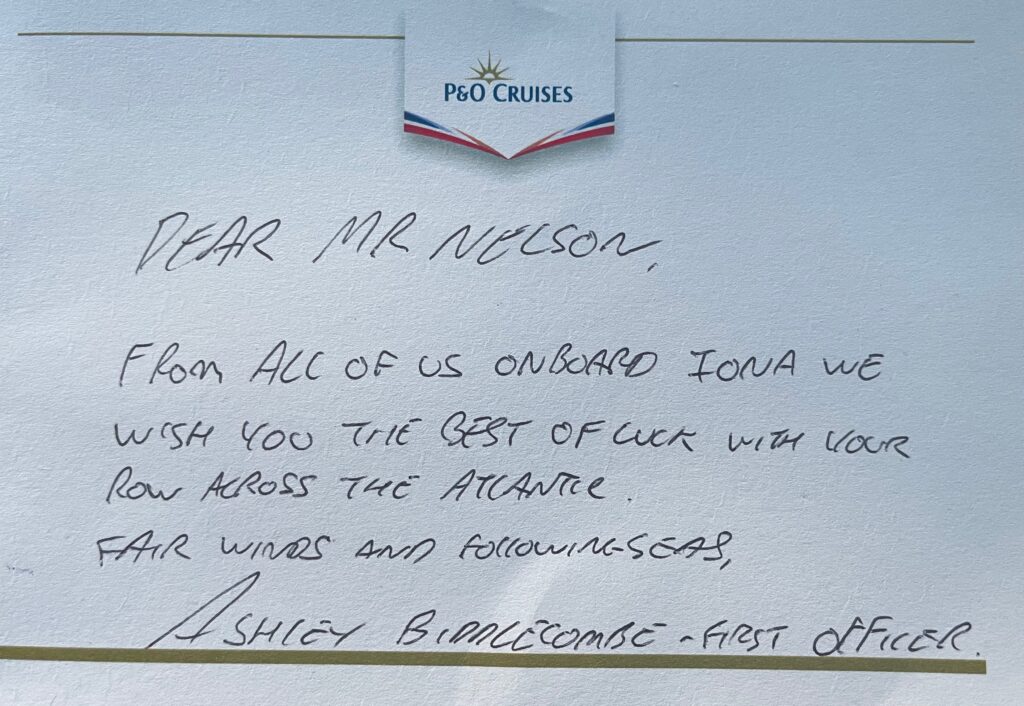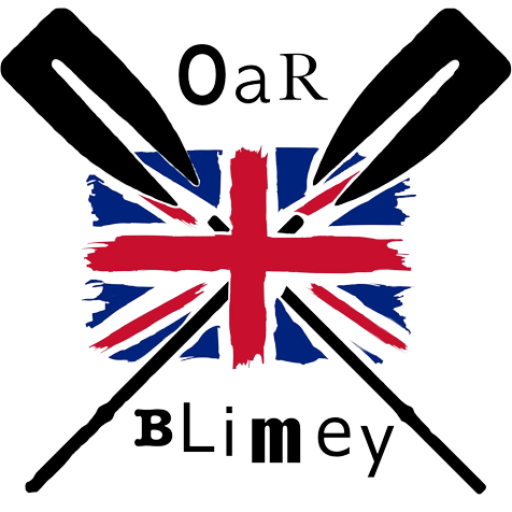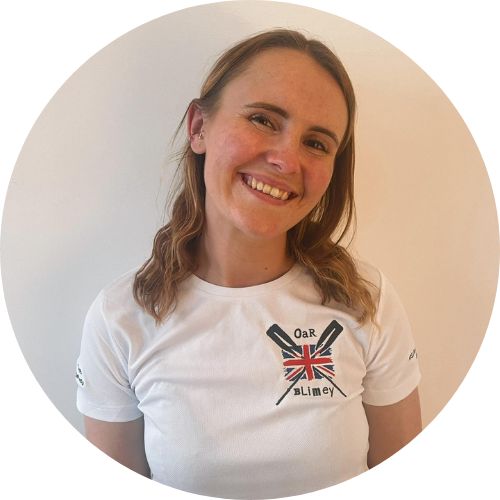There's some big ships on our seas!
The sea is home to some massive tanker, freight, and cruise ship fleets. Some of these vessels are colossal, boasting lengths of 400m and widths of 60m and they are capable of speeds of greater than 20mph. On the open sea, these ships can virtually go anywhere, but closer to land, they need to follow dedicated shipping lanes which are like ocean motorways. Tug boats are generally used to turn and steer them in and around harbours. Yes; this is all very impressive!
What’s not so impressive, is the fact that these giant ships can take over a mile to stop or change their direction.
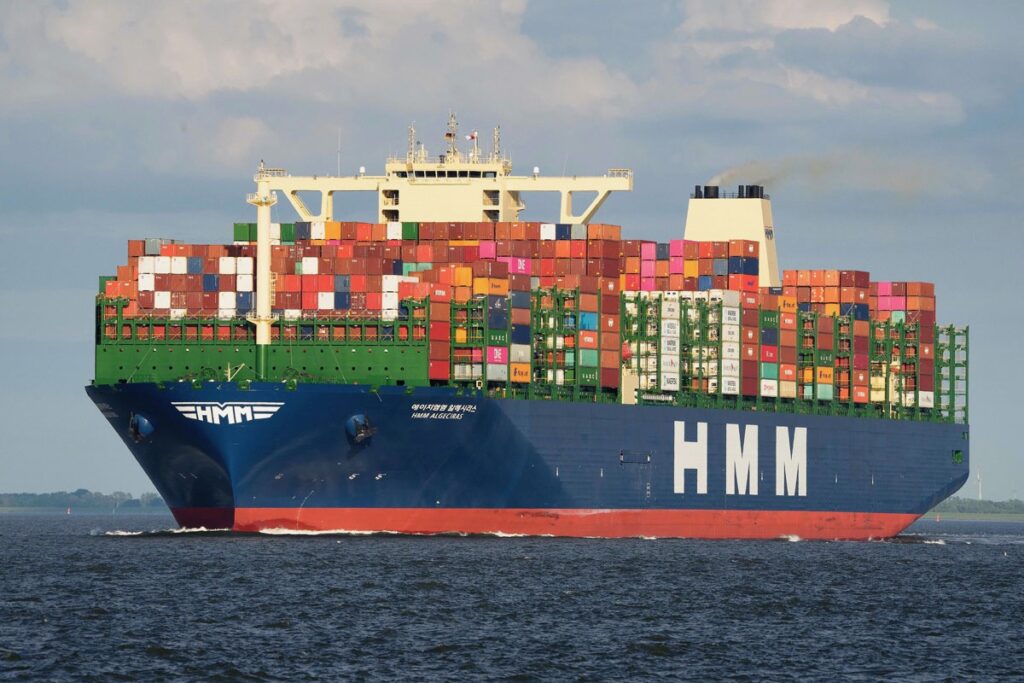
Sitting Ducks
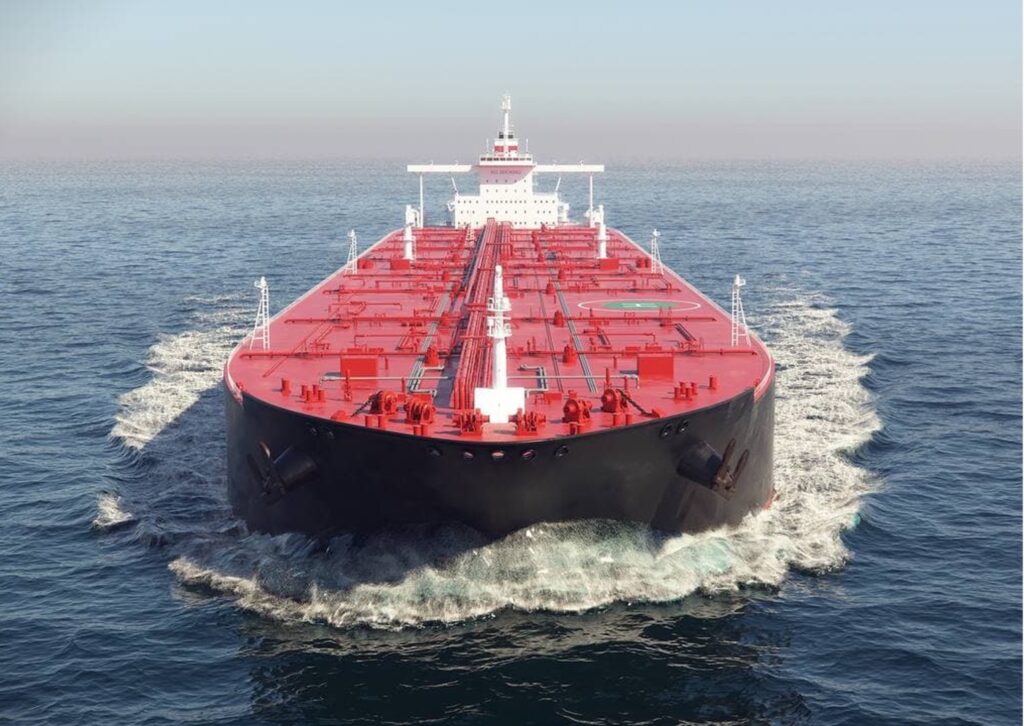
To put this into perspective, immediately on leaving Portugal, George and Russ will cross 5 of the busiest shipping lanes in the world. These lanes filter ships into and out of the narrow Strait of Gibraltar between mainland Africa and Europe. All sorts of cargo’s are transported through this route going into and coming out of the Mediterranean – including fuels, foods, and everyday equipment and materials for our homes and businesses.
To say George and Russ will get to see some of these giant ships up-close is a bit of an understatement. Team Oar Blimey will cross these 5 busy shipping lanes in the first 40 miles of their Atlantic Challenge.
With their tiny rowing boat going flat out on manual power at around 2-3 mph, the boys will be ‘sitting ducks’ every time they cross one of these shipping lanes, so, what do they need to do to avoid a catastrophe?
Getting an experts view
George met Ash Biddlecombe, the First Officer on board Iona, one of P&O’s biggest cruise ships to find out how they are equipped to avoid collisions with smaller boats, and to find out what Team Oar Blimey need to do to make themselves visible to them.
Ash has been with P&O Cruises for 13 years and as First Officer, he is responsible for the navigation whilst aboard Iona.
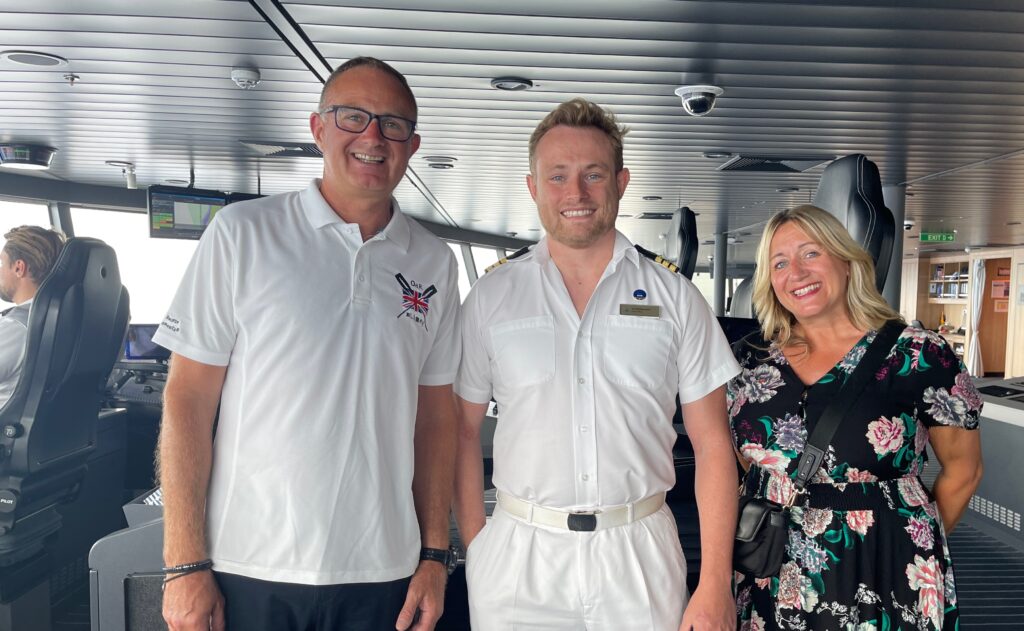
Iona
Iona has 19 decks, is 344.5 metres long and 42 metres wide. It cruises at 17 knots (20 mph) and has a passenger capacity of 5,206 guests plus 1,762 crew. On December 1st, it will be very close to Portugal when Team Oar Blimey set off on their rowing challenge.
Surprisingly, Ash said there aren’t any paper marine charts on board the P&O Cruise vessels because everything is digital and linked to the on-board computer system. He explained the back-up systems in place which make paper charts redundant. When you think about it, it’s pretty much the same as sat-nav systems in cars replacing the good old fashioned paper maps of years gone by.

Preventing a collision at sea
George run Ash through Oar Blimey’s Atlantic Challenge and got straight to the point….“How can a massive ship like Iona see a small boat like Oar Blimey and what can we do to stop a collision at sea?”
Ash explained “On good days with good visibility, there’s every likelihood we’ll spot you from the [ships] bridge. The view from the elevated height on the bridge allows the lookouts to see for miles. Ash was pleased Oar Blimey’s boat was mainly white, he said “white will make you to stand out to our watch teams who are looking-out for potential hazards”.
Radar
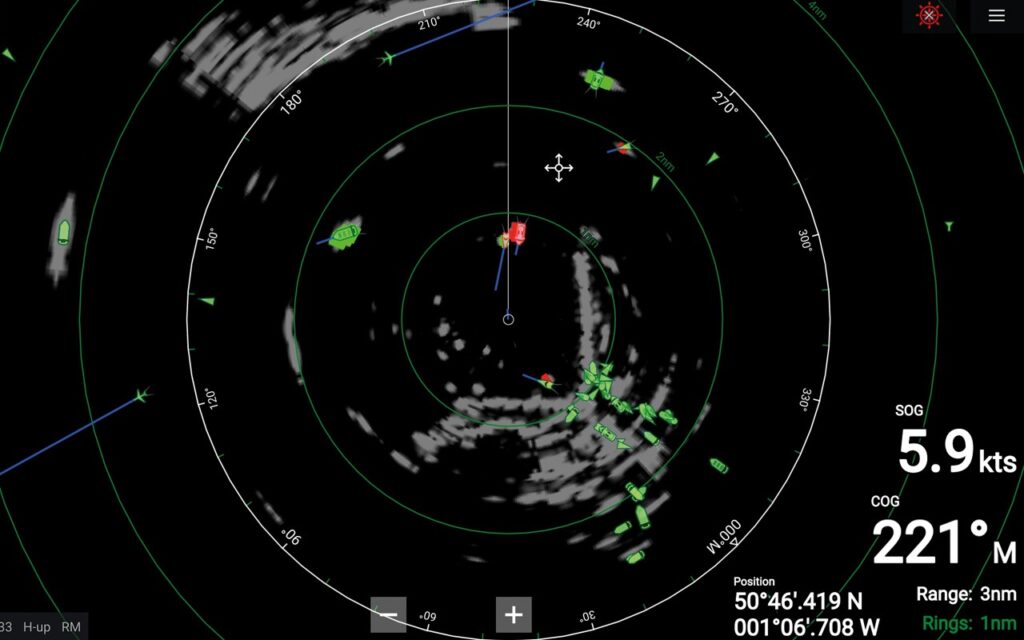
Ash then showed George the radar screen and explained this can coves a range of up to 50 miles and vessels with good radar reflectors can be spotted fairly easily. Although it’s not the ultimate detection system, it can spot surfers and paddleboarders in the vicinity of the ship.
George explained “Oar Blimey has a large passive radar reflector, although it’s limited to being 1.5m above the water level due to Ocean Rowing Society rules. This ensures minimal wind assistance on a manual rowing boat”. Ash emphasised ‘radar reflectors work best when they’re high up” so George knows Oar Blimey probably won’t be clearly visible to some of these large vessels at any great distance.
Automatic Identification System (AIS)
A little concerned about radar visibility, George mentioned that Oar Blimey have an AIS transmitter and receiver on board and Ash smiled and said “if you’ve got that, you’ve got nothing to worry about as you’ll show up on the AIS system with all your details. He showed George a screen full of little triangles and list of vessel names, their courses, and speeds.
George immediately felt comforted that Oar Blimey have the right safety equipment to be seen by these giant ships at sea. So, being visible is one thing, what if George and Russ are on a collision course with a gigantic ship like Iona? Ash explained “it could take about a mile to bring Iona to a halt, and some of the bigger tankers take much longer distances.’ Simply altering the course of a mega-tanker ship could also take half a mile.
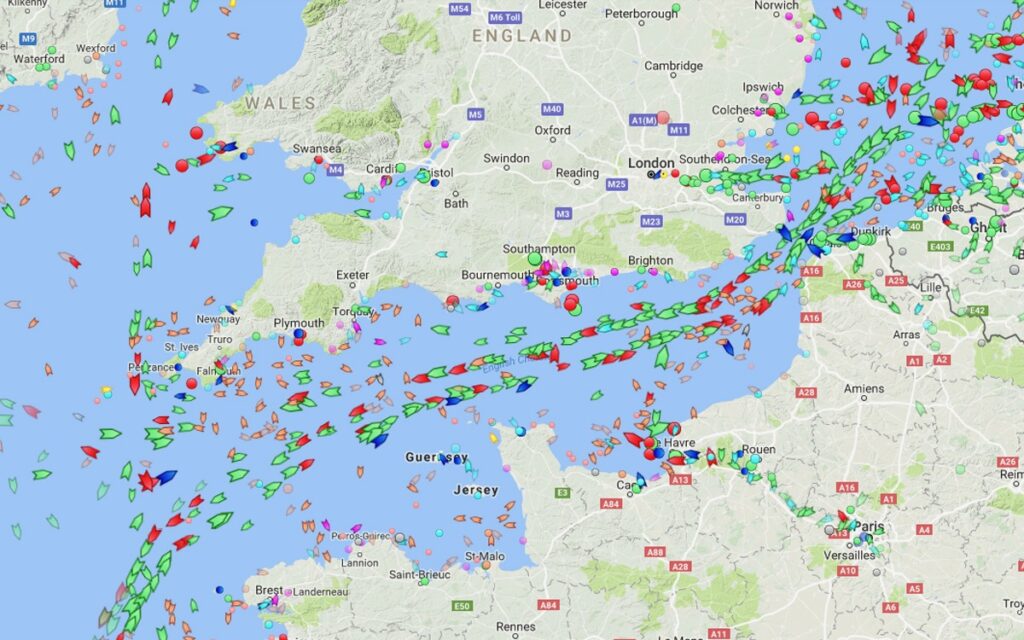
Ash explained that setting the AIS (automatic identification system) alarm to at least a mile radius will alert you to oncoming vessels and he further emphasised that Oar Blimey should always try to make VHF radio contact with any oncoming vessels to make sure they have spotted Oar Blimey and are taking action to avoid a collision.
Iona’s bridge has great forward and side visibility and where there are obstructions, cameras provide an all-round view of the ship in the water. The ship uses state of the art computer technology which ensures the safety of Iona and identifies other vessels to avoid collisions at sea.
Whilst this is hugely comforting for our boys, George and Russ have assured me their arms will be going like ‘bees wings’ as they cross these busy shipping channels. If everything else fails, Ash recommends letting off some white warning flares.
I don’t know about you, but as we get closer to the start of this challenge – I’m getting butterflies in my stomach!


Partner with us, sponsor us or simply donate – every bit of your help and support is extremely welcome and will help Oar Blimey complete the Atlantic Challenge and raise funds to help people live with dementia.
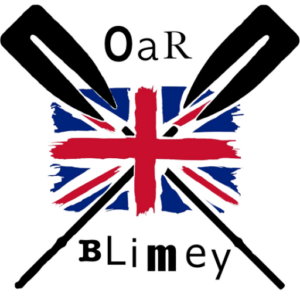
Special Thanks and Recognition
HUGE THANKS to P&O Cruises and to Ash Biddlecombe, the First Officer on board Iona for showing Oar Blimey the safety features and systems in place for avoiding collisions at sea.
P&O Cruises have kindly supplied a bottle of Champagne for Oar Blimey’s fundraising raffle. THANKS P&O
